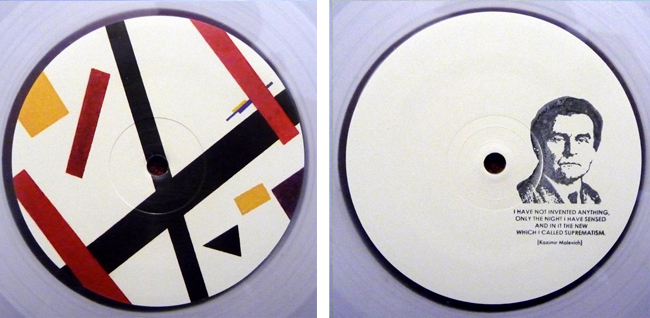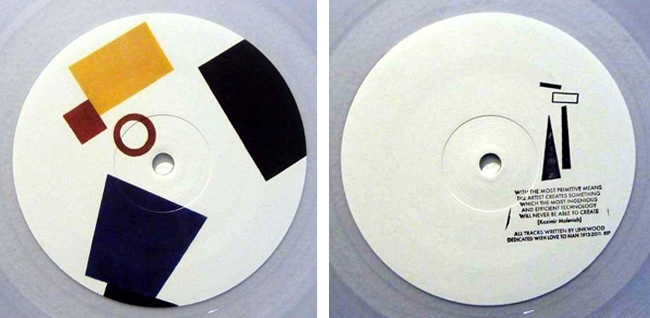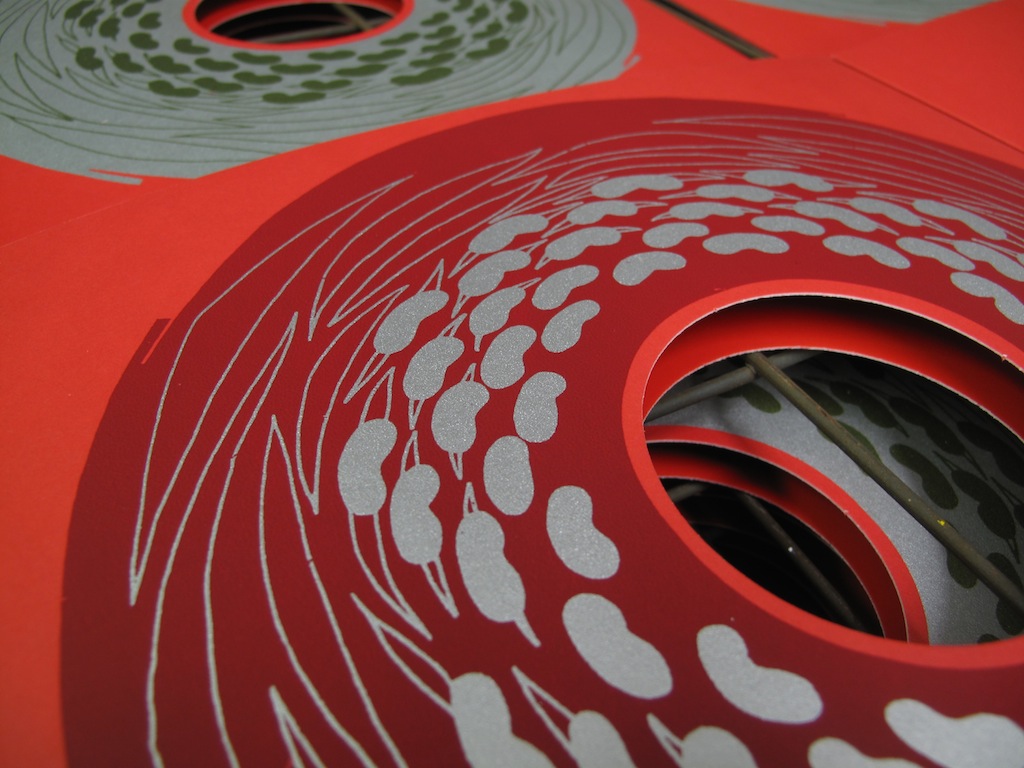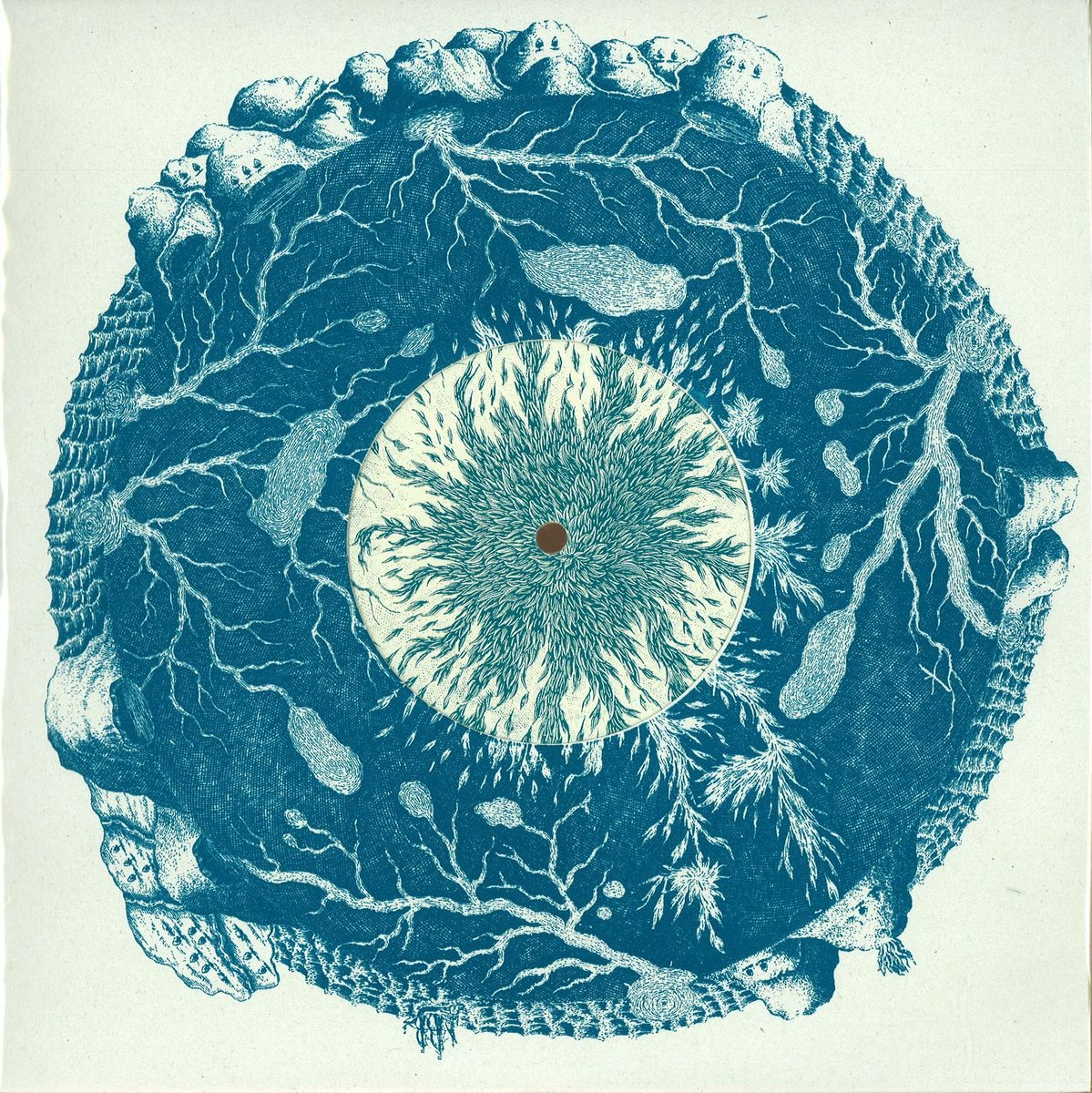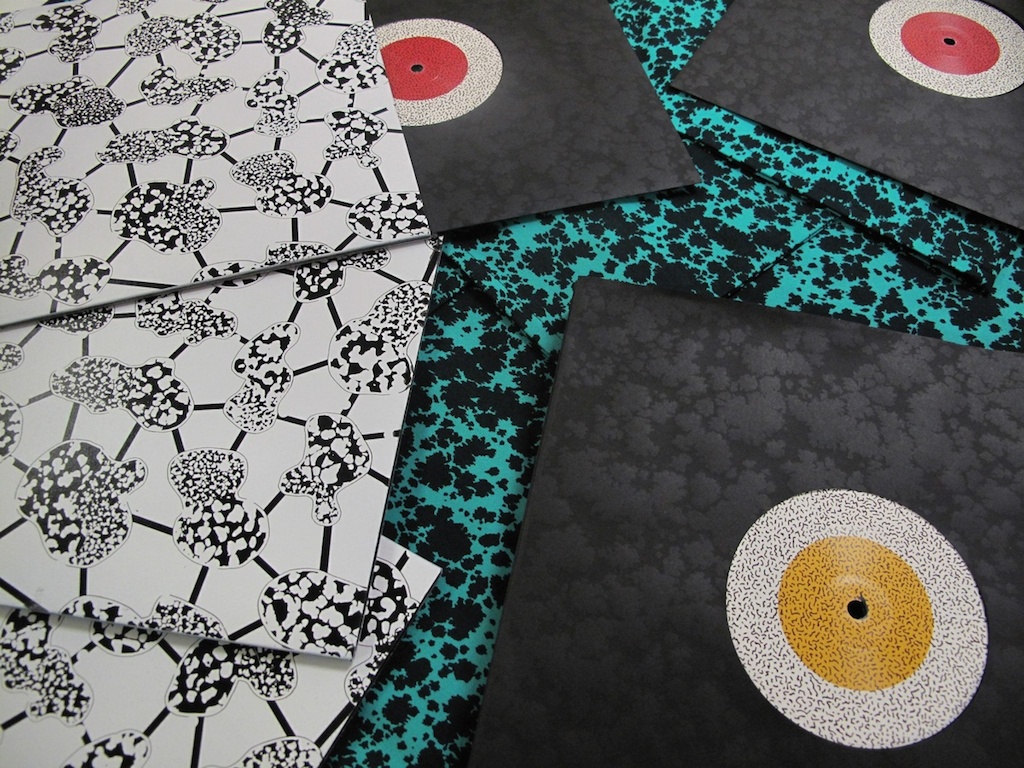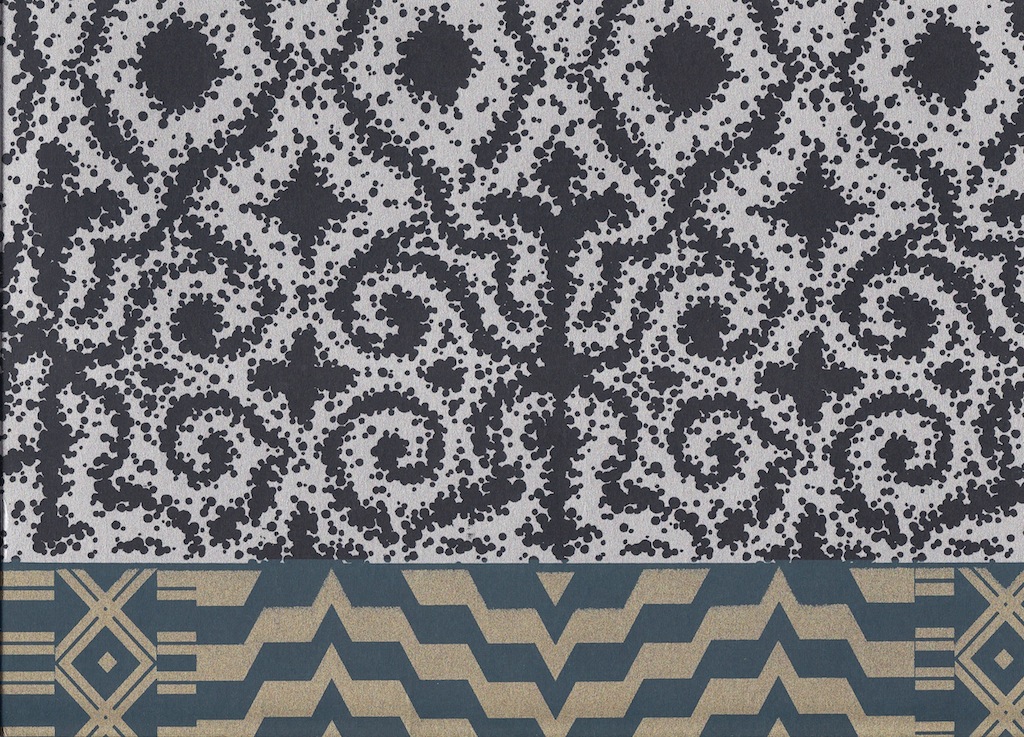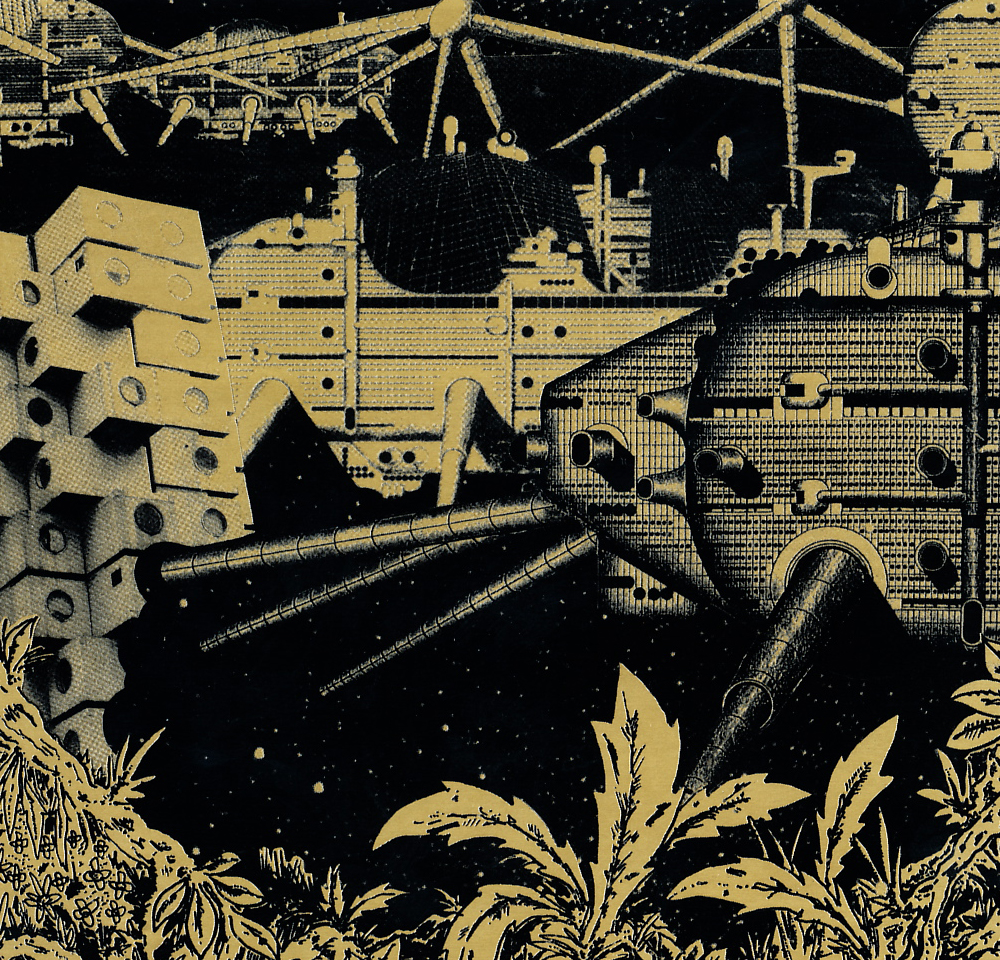- House Of Traps
- Print Designer
- Edinburgh, UK
- Website | Firecracker
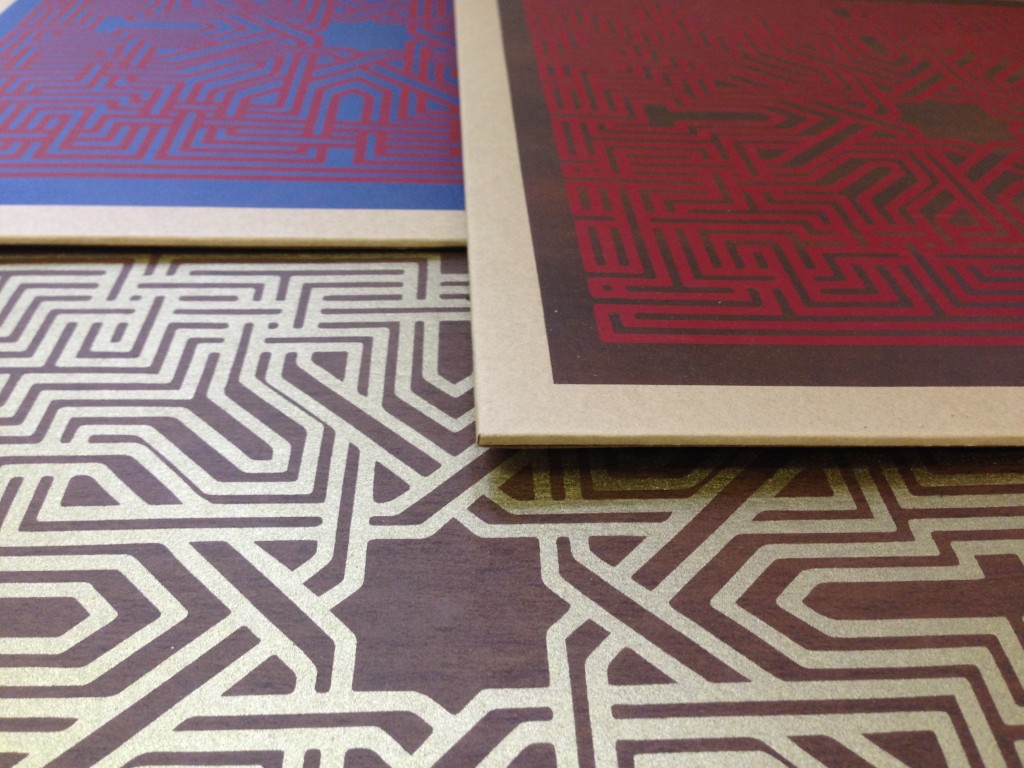
CF: There isn’t much info about your background out there. For those who have never come across your work, who is Lindsay Todd? How did you first get involved in design and screen printing?
I’m 37 years of age and from a small town in Fife called Cupar. I spent most of my childhood in weird rural isolation, first on a farm in Fife and then up near Loch Tay in the wilds of Scotland. I studied Graphic Design at Edinburgh Art College, graduated in 1999 and (apart from 1 year in Madrid and 4 years in London) have lived here ever since. I had all passion for art and design squeezed out of me at art college (mainly because of choosing the wrong course) but rediscovered it all again about 10 years ago.
I only really picked up the screen printing skills again in 2008 when I convinced myself it would be a good idea to print and stamp all 1000 copies of the Intrusion Dubs 12″. I’ve never really considered myself a ‘screen printer’ per se, preferring to use it for now as the best way to experiment and produce multiple editions. I also chose to work in the shadows as I’d never really felt it was ‘about me’, preferring to let the music or art speak for itself. Maybe that’s down to a deeply ingrained Calvinist mindset you seem to inherit simply by being a Scotsman, but these days I’m starting to discover the merits of ‘bigging oneself up’.
CF: What was the inspiration behind starting Firecracker Recordings. More importantly, what were some of the influences for the visual side of the label?
It was a reaction to what was going on at the time (or rather what wasn’t going on). I remember the first years of the new millennium being rather bleak musically and saw the opportunity to dive in with something fresh and exciting. I used to work in a record shop with Gav ‘Fudge Fingas’ Sutherland, and Nick (Linkwood) had just moved his studio into my bedroom. Not quite clear on how that happened, but both of those situations provided the catalyst to do something creative with good friends. Nick’s brother Tim completed the group (we had been at art college together) and he put together the first comic book style covers.
I liked the immediacy and attitude of using found imagery at a time when all other cover art was generic, bland and predictable. But, over time I wanted the artwork to evolve and try to reflect new influences and working processes, much as musical artists do. The Intrusion Dubs of Miles Away (FIREC005) was the first breakthrough. Working by myself, really looking at the processes that would make up the colours of comic books and deconstructing illustration techniques led logically to experiments in print. There’s a huge amount of visual and audio references from our own journeys in those releases and hopefully our fans and listeners have picked up on them.
“I tried to go down the agency route when I left art college & it was completely soul destroying”
CF: After Firecracker, came Unthank. There’s a clear visual difference between both labels, starting from the obvious difference in physical formats. Why is it important for you to have different outlets to express your artistic ideas?
I have a terrible ability to concentrate on anything for long so tend to work in bursts or act on impulses. ‘Lanark‘ by Alasdair Grey was one of the few larger novels I’ve been able to complete in one sitting and was completely blown away by many of the themes and imagery it contained. There’s still so much more to explore in that book and I’d recommend reading it. One was a parallel world to Glasgow called Unthank. I knew at once that I wanted that to be a starting point for another label, where the music and identity could be parallel to what had been done previously with Firecracker.
I’ve always liked the 10″ format, but over time have become aware of its restrictions in time and quality. That’s why quite a few of the other projects on Firecracker have become 12″ format. A similar thing happened with the Shevchenko label. I originally launched it as an outlet for Vakula’s increasing output. At the time he was working in what seemed like isolation in his hometown of Konotop, deep in Ukraine’s countryside. After visiting him there it made sense to have the label reflect the ethos of and pure feeling of ‘Suprematism‘. Hand stamping the records with quotes from Slavic and Russian poets and thinkers seemed right to complete the package.
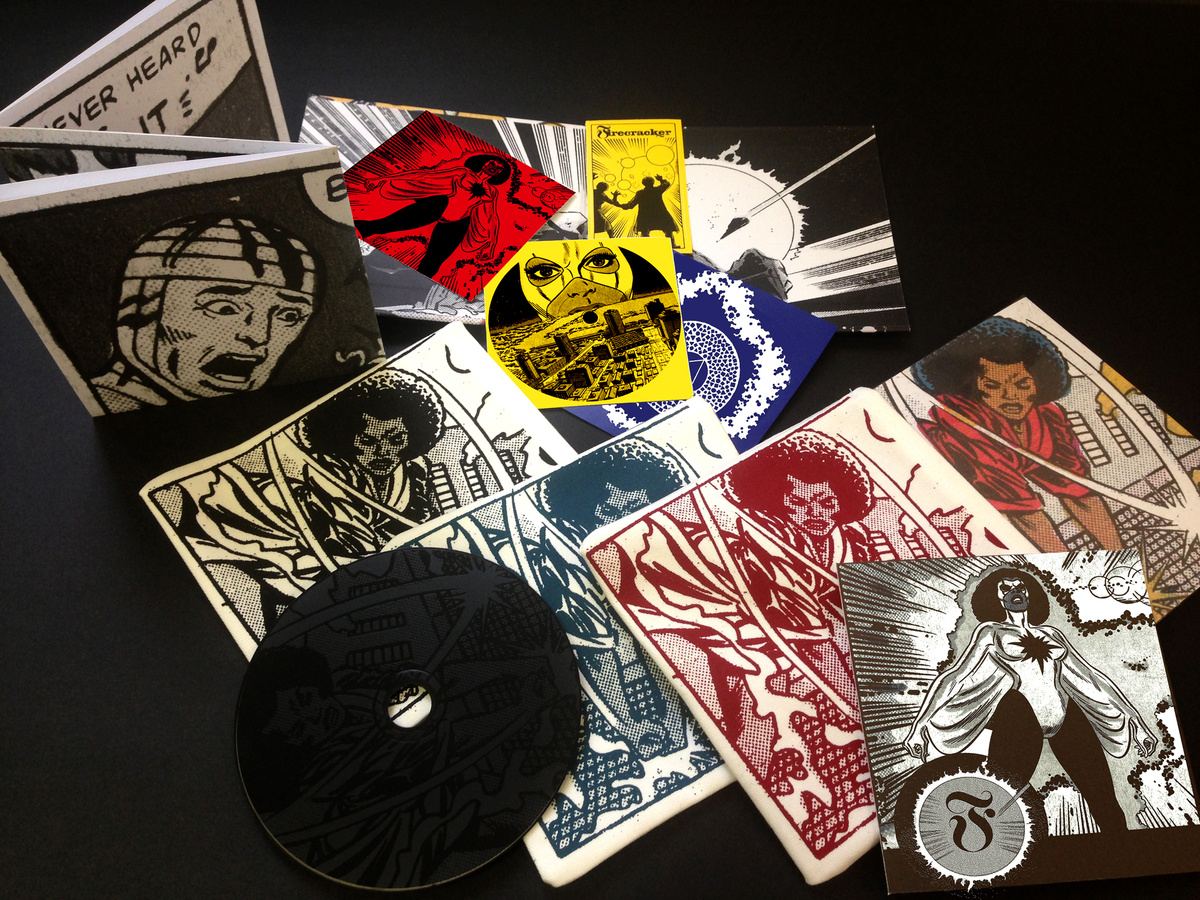
CF: You’ve also done some design and screenprinting work for other labels, most notably the excellent Jazzman Records. How did that collaboration come about? Is it important for you to feel a personal connection to the music you design and print covers for?
I moved to London, rather impulsively in 2009 and was introduced to Gerald Short by a mutual friend. He had a job going doing mail-order and the like. After a few months I suggested that I put a mezzanine floor into the warehouse space he ran Jazzman from in Ladbroke Grove. Fast forward a while and all those projects like the Sun Ra, Jef Gilson and Salah Ragab were being produced in-house by myself; I had built a compact screen print studio and could do pretty much everything there. It was a real baptism of fire; I spent plenty of evenings just printing and then crashing under the print bed because so much would go wrong! Screens would fall apart, emulsion would break down, paint wouldn’t dry properly, all the things that could go wrong did. I was a total maverick really, but I knew it was what I wanted to do (I was also able to run Firecracker out of that space) and how I wanted to progress with all the sleeve art.
I was lucky that I had loads of good friends who dropped in regularly and helped out back then. Since I was based in Ladbroke Grove it was only a hop and a skip to Honest Jon’s. Regular trips to buy stock for the Jazzman shop forged good friendships with the staff and led to printing some Honest Jon’s covers and Will Bankhead’s first Trilogy Tapes LP. It was a great place to spend a couple of years.
To answer your question though, I have to 100% be into the music in order to work on the visual side. I tried to go down the ‘agency’ route when I left art college and it was completely soul destroying. Even the freelance work I did as a designer back then was putting together logos and menus for bars and I had to bail out of that as quickly as possible to save my own sanity. It took me the best part of a decade to get back to where I am now, and I feel lucky to be surrounded by and working with so many musical talents.
“I have a terrible ability to concentrate on anything for long so tend to work in bursts or act on impulses”
CF: Why do you feel it’s important for music to have an appropriate visual companion? What does it provide for the listener and for the music itself?
When I was a child, my mum used to buy me these far-out tapes and records that had titles like ‘Sounds Of The Vikings’. I hadn’t thought about those for years but they were completely immersive for me because they had field recordings, music and books that came with them. I was a pretty reclusive kid and that was my world then. Then when I was a teenager I would be just as immersed for hours in music and sketchbooks, often drawing covers for imaginary records. So I guess that’s always been my head space, with art and music intrinsically linked.
I do remember being completely blown away years ago when first introduced to the cover art of Sun Ra’s Arkestra recordings. Of the hundreds of LPs, each one might have had multiple variations often with various band members working on automatic drawings to produce unique covers. That was the point at which it made complete sense to experiment with cover art – visual narratives that continue to reveal details the longer we engage with them. Then the idea came for the two Sun Ra singles collections on Jazzman. Gerald and I had been talking one night about how he really wanted to reissue the singles as 7″ format and I jumped at the chance to be able to do all that illustration, typesetting and collage by hand. I don’t think we went near a Mac for that whole project.
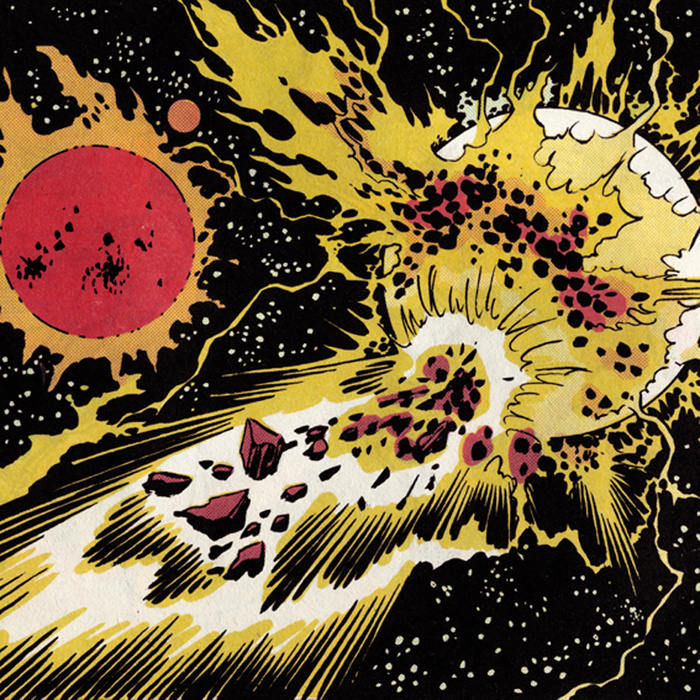
CF: What is your favourite thing about living in Edinburgh?
Seeing the city entering what seems like an arts and cultural renaissance. I grew up here in the 90s and it was bleak. Apart from the clubs, there was very little stimulus; it was like a stagnant, provincial backwater. I’m also pretty blessed to have a studio in Edinburgh’s Summerhall, a major International Festival Venue and community of artists and creatives.
“I chose to work in the shadows as I’d never really felt it was about me, preferring to let the music or art speak for itself”
CF: Are there any collaborations or projects coming up in the near future you could share with us?
Myself and Stuart Leath (Emotional Response / Rescue) have just launched a new label called Sacred Summits, and our first release was in December last year. It’s a reissue of a 1981 LP by Mexican artist Luis Perez featuring experiments fusing Pre-Columbian instruments with electronic devices such as tape based delay units and analog synths. Honest Jons are distributing the label and we’re readying the second release right now. The new Unthank should be hitting stores around about now (that one’s a collab with the artist Denaji and with a remix by DJ Sotofett). Also pretty excited to be releasing the Panoram LP on Firecracker in this month, and then there’s this Linkwood LP bubbling away nicely.
There’s some more Sun Ra stuff in the pipeline too – a couple of handmade reissues coming via the great Artyard imprint and a larger scale exhibition in the new year following on from the one I curated at Summerhall for the Edinburgh International Arts Festival. I also plan to return in 2014 to the remote Scottish island of St. Kilda to finish a field recording project I started a couple of years ago.
